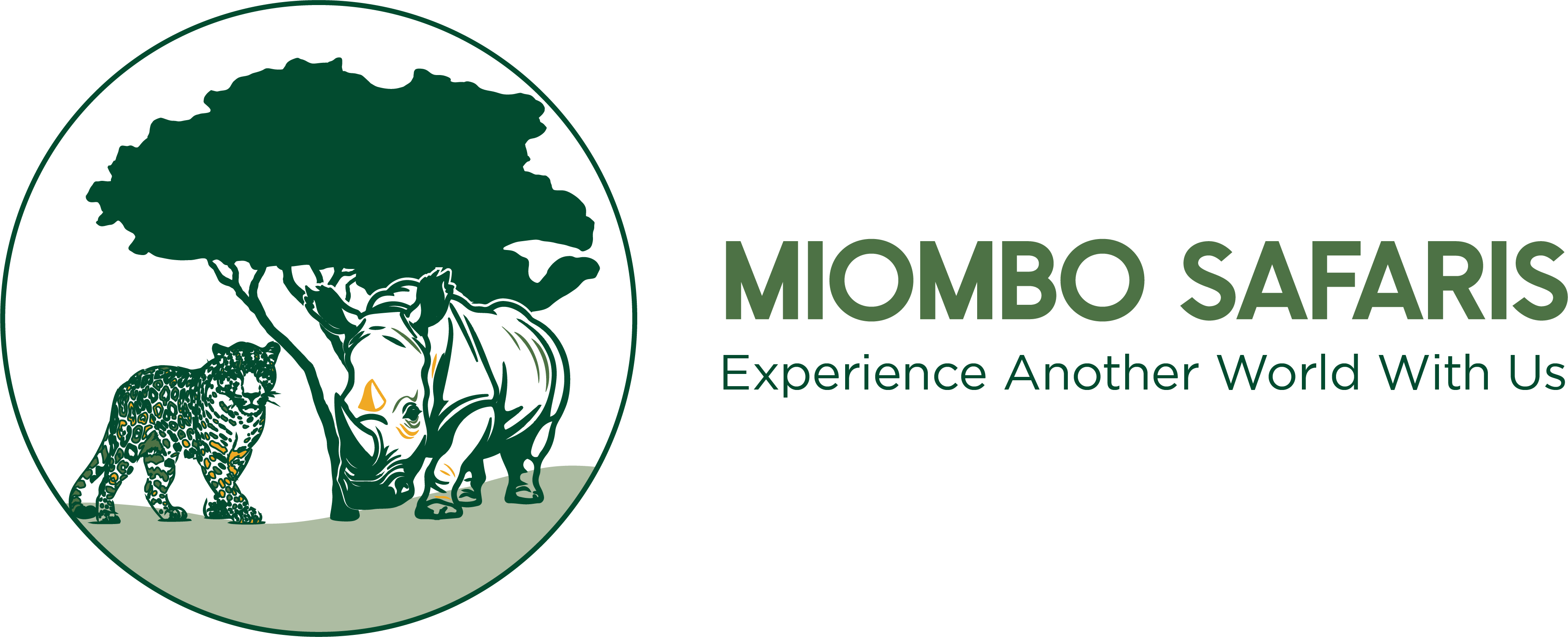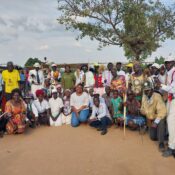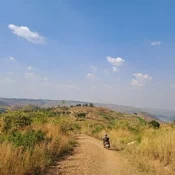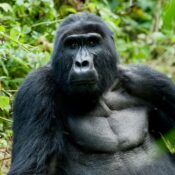Is Uganda Good for Safari? Learn From The Pros!
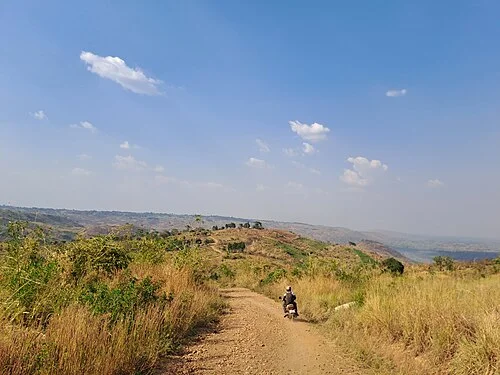

Is Uganda Good for Safari? Learn From The Pros!
If you’re planning your next safari, you may be wondering, “Is Uganda good for safari?” Today, we’re here to help. In this blog post, we will delve into the allure of Uganda as a premier safari destination, exploring the rich tapestry of its national parks, the enchanting encounters with the Big Five, and the vibrant avian life that fills the skies. Join us as we unravel the wonders of Uganda’s safari offerings and discover why this East African gem is a must-visit for any nature lover or wildlife enthusiast.
Understanding Uganda: An Introduction to its Natural Beauty
Uganda, known as the “Pearl of Africa,” is a country nestled in the heart of East Africa. Bordered by Kenya, South Sudan, Tanzania, Rwanda, and the Democratic Republic of Congo, Uganda offers a diverse landscape that encompasses savannahs, mountains, lakes, and dense forests. Its extensive array of ecosystems provides the perfect habitat for a wide variety of flora and fauna.
One of the most iconic features of Uganda is its lush greenery. The country is blessed with a favorable climate that supports the growth of vibrant vegetation, making it a haven for numerous plant species. From the dense rainforests of Bwindi Impenetrable National Park to the sprawling plains of Queen Elizabeth National Park, the landscapes of Uganda are a sight to behold.
The country’s natural beauty extends beyond its picturesque scenery. Uganda is home to an exceptional range of wildlife, making it a prime destination for safari enthusiasts. The national parks and reserves scattered across the country offer an opportunity to witness the incredible diversity of animal species that call Uganda their home.
To truly appreciate the natural wonders of Uganda, it is important to understand the delicate balance between conservation and sustainable tourism. The government of Uganda, in collaboration with various organizations, has implemented measures to protect its natural heritage and promote responsible tourism practices. These efforts have not only safeguarded the habitats of endangered species but also created opportunities for local communities to benefit from eco-tourism initiatives.
As we explore Uganda’s safari offerings in the subsequent sections, we will gain a deeper understanding of the country’s commitment to preserving its natural beauty and the remarkable experiences that await those who venture into its untamed wilderness. So, let us embark on this journey and discover the wonders that make Uganda an exceptional destination for safari enthusiasts.
Wildlife in Uganda: What to Expect on a Safari
A safari in Uganda offers an unparalleled opportunity to witness an incredible array of wildlife in their natural habitats. From majestic mammals to elusive primates and a plethora of avian species, Uganda’s wildlife is diverse, captivating, and truly extraordinary. In this section, we will delve into the fascinating world of Uganda’s wildlife and explore the remarkable encounters that await safari-goers.
The Big Five: Uganda’s Top Wildlife Attractions
Uganda is home to a number of iconic species that form the renowned Big Five – the African elephant, Cape buffalo, lion, leopard, and rhinoceros. While rhinoceros sightings are limited due to their endangered status, the other members of the Big Five can be spotted in various national parks across the country.
- African Elephant: Uganda boasts a healthy population of African elephants, particularly in parks such as Queen Elizabeth National Park and Murchison Falls National Park. These gentle giants can be observed as they roam the savannah, graze on the vegetation, or cool off in watering holes.
- Cape Buffalo: The Cape buffalo is a formidable and majestic creature found in abundance in Uganda. These massive herbivores can be seen in herds, often grazing peacefully in the grasslands. Murchison Falls National Park is known for its thriving buffalo population.
- Lion: The king of the jungle, the lion, can be found in several national parks in Uganda, including Queen Elizabeth National Park and Kidepo Valley National Park. Witnessing a lion pride in their natural habitat, hearing their powerful roars, and observing their hunting strategies is an unforgettable experience.
- Leopard: Though elusive and renowned for their stealth, leopards can be spotted in Uganda’s national parks, such as Queen Elizabeth National Park and Kidepo Valley National Park. Their spotted coat camouflages them amidst the trees, making for a thrilling and rewarding sighting if you’re lucky enough to spot one.
Endangered Species and Conservation Efforts
Uganda is committed to preserving its endangered species and has made significant strides in conservation efforts. One of the most notable success stories is the conservation of the mountain gorillas in Bwindi Impenetrable National Park and Mgahinga Gorilla National Park. These gentle giants, with their expressive eyes and imposing presence, are a major draw for tourists seeking an up-close encounter with these critically endangered primates.
Other endangered species that can be found in Uganda include the Rothschild’s giraffe, the Grevy’s zebra, and the shoebill stork. Several national parks and conservation organizations are actively involved in protecting and preserving these species, ensuring their survival for future generations.
Birdwatching: Uganda’s Avian Diversity
Uganda is a paradise for birdwatchers, with over 1,000 recorded bird species. From colorful sunbirds and vibrant bee-eaters to majestic eagles and rare shoebill storks, Uganda’s avian diversity is truly remarkable. The country’s varied habitats, including wetlands, forests, and savannahs, provide a rich feeding ground and nesting sites for numerous bird species.
Key birdwatching destinations include Queen Elizabeth National Park, Murchison Falls National Park, and Kibale National Park. Whether you are an avid birder or simply appreciate the beauty of these winged creatures, Uganda offers an unparalleled opportunity to witness a mesmerizing display of avian life.
As you embark on your safari adventure in Uganda, keep your binoculars ready and your camera poised to capture the awe-inspiring moments that come with encountering the Big Five, witnessing conservation efforts in action, and indulging in the vibrant world of Uganda’s birdlife.
Safari Destinations in Uganda
Uganda is blessed with a variety of national parks and reserves that serve as prime safari destinations. Each of these destinations offers unique landscapes, diverse wildlife, and unforgettable experiences. In this section, we will explore some of the top safari destinations in Uganda, showcasing their highlights and the incredible encounters that await.
Queen Elizabeth National Park
Located in southwestern Uganda, Queen Elizabeth National Park is a jewel in the country’s safari crown. Spanning an area of approximately 1,978 square kilometers, this park is renowned for its diverse ecosystems, which include savannahs, wetlands, and dense forests.
One of the main attractions of Queen Elizabeth National Park is its population of tree-climbing lions. These rare lions can be spotted lounging on the branches of fig trees, providing a truly unique sight. The park is also home to an abundance of wildlife, including elephants, buffalos, hippos, and various antelope species.
For bird enthusiasts, Queen Elizabeth National Park boasts over 600 bird species, making it a premier destination for birdwatching. The Kazinga Channel, which connects Lake Edward and Lake George, is a hotspot for birdlife, with numerous waterbirds and migratory species.
Murchison Falls National Park
Situated in northwestern Uganda, Murchison Falls National Park is the largest and oldest national park in the country. Spanning an area of approximately 3,840 square kilometers, it is named after the majestic Murchison Falls, where the Nile River forces its way through a narrow gorge, creating a breathtaking cascade.
The park is known for its incredible wildlife, including large populations of elephants, giraffes, buffalos, and hippos. It is also home to numerous predators, such as lions, leopards, and spotted hyenas. Visitors can embark on game drives to witness these magnificent creatures in their natural habitat.
An absolute highlight of Murchison Falls National Park is the Nile River boat cruise, which takes you along the river, offering stunning views of wildlife on the banks and the opportunity to spot crocodiles and a variety of bird species. Additionally, adventurous travelers can embark on a hike to the top of Murchison Falls, where the powerful Nile River plunges down, creating a spectacular sight.
Bwindi Impenetrable National Park
Bwindi Impenetrable National Park, located in southwestern Uganda, is a UNESCO World Heritage Site and a sanctuary for the endangered mountain gorillas. Covering an area of approximately 321 square kilometers, this dense forest is home to roughly half of the world’s population of mountain gorillas.
Trekking through the misty forests of Bwindi provides a once-in-a-lifetime opportunity to encounter these gentle giants up close. The park offers gorilla trekking experiences, allowing visitors to spend a precious hour observing and immersing themselves in the world of these magnificent creatures.
Apart from the gorillas, Bwindi Impenetrable National Park is also a haven for other primates, such as chimpanzees, colobus monkeys, and various monkey species. The park’s rich biodiversity, including over 350 bird species, makes it a paradise for nature lovers.
Kidepo Valley National Park
Nestled in the rugged northeastern region of Uganda, Kidepo Valley National Park is a hidden gem waiting to be explored. Despite its remote location, this park is well worth the journey for its dramatic landscapes, abundant wildlife, and authentic safari experiences.
Kidepo Valley National Park is known for its vast savannah plains, rugged mountains, and stunning sunsets. The park is home to a wide range of wildlife, including lions, cheetahs, elephants, giraffes, zebras, and numerous antelope species. It is also a prime destination for birdwatching, with over 475 recorded species.
What sets Kidepo Valley National Park apart is its untouched wilderness and the opportunity to experience a true sense of solitude and tranquility. The park sees fewer visitors compared to other popular safari destinations, allowing for a more intimate and exclusive wildlife viewing experience.
These are just a few of the remarkable safari destinations that Uganda has to offer. Each park and reserve presents a unique opportunity to connect with nature, witness awe-inspiring wildlife, and create memories that will last a lifetime. Whether you choose to explore the tree-climbing lions of Queen Elizabeth National Park, marvel at the power of Murchison Falls, encounter mountain gorillas in Bwindi Impenetrable National Park, or embrace the untouched beauty of Kidepo Valley National Park, Uganda’s safari destinations are sure to leave you spellbound.
Planning Your Safari in Uganda
Embarking on a safari in Uganda requires careful planning and preparation to ensure a smooth and rewarding experience. In this section, we will guide you through the essential steps of planning your safari, from determining the best time to visit to selecting a reputable tour operator and packing the right essentials.
Best Time to Visit
Uganda’s climate is generally favorable for safaris throughout the year, but the best time to visit may vary depending on your specific interests and preferences.
- Dry Season (December to February, June to September): The dry season offers clearer skies, less rainfall, and easier wildlife sightings as animals gather around watering holes. This is an ideal time for game drives and gorilla trekking.
- Wet Season (March to May, October to November): The wet season brings lush green landscapes, fewer tourists, and lower prices. However, some roads may be impassable, and wildlife can be harder to spot due to the dense foliage.
Consider your priorities, such as wildlife viewing, birdwatching, or gorilla trekking, and consult with tour operators to determine the best time to visit based on your preferences.
Choosing a Safari Tour Operator
Selecting a reputable and experienced tour operator is crucial for a successful safari in Uganda. Consider the following factors when choosing a tour operator:
- Experience and Expertise: Look for tour operators with extensive experience in organizing safaris in Uganda. They should have knowledgeable guides and a strong commitment to conservation and responsible tourism.
- Reviews and Recommendations: Read reviews and seek recommendations from fellow travelers or reputable travel websites to gauge the quality of service provided by different tour operators.
- Itinerary Options: Ensure that the tour operator offers itineraries that align with your interests and desired destinations. Customizable options are also beneficial if you have specific preferences.
- Responsible Tourism Practices: Choose a tour operator that promotes sustainable and ethical tourism practices, respects wildlife, and supports local communities.
What to Pack for a Safari
Packing the right essentials is essential for a comfortable and enjoyable safari experience. Here are some items you should consider including in your safari packing list:
- Lightweight and breathable clothing in neutral colors to blend with the environment
- Long-sleeved shirts and pants to protect against insects and the sun
- Comfortable walking shoes or hiking boots
- Hat, sunglasses, and sunscreen for sun protection
- Insect repellent and anti-malarial medication
- Binoculars and a camera with extra batteries and memory cards
- Portable charger or power bank for electronic devices
- Travel adapter for charging devices
- Personal toiletries and any necessary medications
- First aid kit with basic medical supplies
- Waterproof backpack or daypack for carrying essentials during activities
- Cash and/or credit cards for transactions and tips
Remember to check with your tour operator for any specific packing requirements or recommendations based on the activities and destinations included in your safari itinerary.
As you plan your safari in Uganda, consider the best time to visit, choose a reputable tour operator, and pack the necessary essentials for a comfortable and memorable experience. With careful planning and preparation, you can embark on a safari adventure that allows you to fully immerse yourself in the wonders of Uganda’s wildlife and natural beauty.
Safety and Health Considerations for a Safari in Uganda
When embarking on a safari in Uganda, it is crucial to prioritize safety and ensure your well-being throughout your adventure. In this section, we will discuss important safety and health considerations to keep in mind while exploring the wilderness of Uganda.
Safety Measures During Your Safari
Follow Park Regulations: Adhere to the rules and regulations set by the national parks and reserves you visit. These guidelines are in place to ensure the safety of both visitors and wildlife. Respect wildlife from a safe distance and never attempt to feed or touch them.
- Stay with Your Guide: Always stay close to your safari guide or ranger, especially during game drives, gorilla trekking, or walking safaris. They are trained professionals who have extensive knowledge of the wildlife and surroundings.
- Be Aware of Your Surroundings: Stay vigilant and aware of your surroundings at all times. Avoid wandering off on your own and stay within designated areas. The wilderness can be unpredictable, so it is important to exercise caution.
- Secure Your Belongings: Keep your belongings secure and within sight. Safeguard your valuables, such as cameras and passports, in a safe and secure manner. It is also advisable to have travel insurance that covers theft or loss of personal belongings.
Health Precautions and Vaccinations
- Consult with a Travel Health Professional: Before traveling to Uganda, consult with a travel health professional or visit a travel clinic to get up-to-date information on required vaccinations and health precautions. Some common vaccinations for Uganda include yellow fever, typhoid, hepatitis A and B, and meningitis.
- Malaria Prevention: Uganda is a malaria-endemic country, so it is essential to take preventive measures. Consult with a healthcare professional about anti-malarial medication, and use insect repellents, wear long-sleeved clothing, and sleep under mosquito nets to minimize the risk of mosquito bites.
- Safe Drinking Water: To avoid waterborne diseases, drink only bottled or filtered water. Avoid consuming tap water or ice cubes made with tap water. It is also advisable to brush your teeth with bottled or filtered water.
- Food Safety: Be cautious about the food you consume during your safari. Opt for well-cooked meals and avoid street food or raw and unpeeled fruits and vegetables, as they may be contaminated. Wash your hands regularly or use hand sanitizers before eating.
Travel Insurance for Safaris
Obtaining comprehensive travel insurance is highly recommended when planning a safari in Uganda. Ensure that your insurance policy covers medical expenses, emergency evacuation, trip cancellation or interruption, and loss or theft of personal belongings. Check the policy details and exclusions carefully, and keep a copy of your insurance documents easily accessible during your trip.
By following safety measures, taking necessary health precautions, and obtaining appropriate travel insurance, you can minimize risks and ensure a safe and healthy safari experience in Uganda. Prioritize your well-being, enjoy the wonders of the wilderness, and create memories that will last a lifetime.
For your tailor-made Uganda safari, get in touch with the Miombo Safaris team today!
